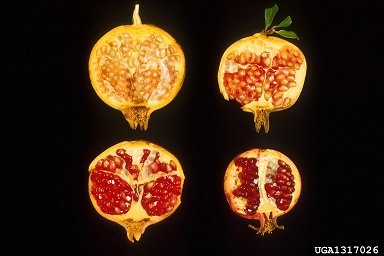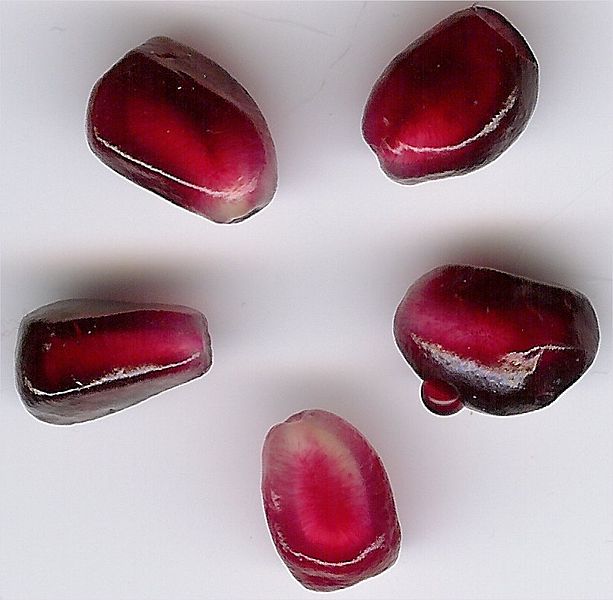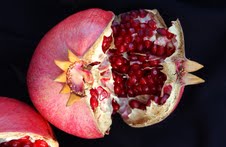Interesting Facts
- Punica granatum is nicknamed the "Jewel of Winter" because it is in season from September to January in the Northern Hemisphere.
- In the United States, pomegranates are used more for decoration than they are for food.
- Color does not indicate the ripeness of pomegranate fruit. Rather, fruit should be selected based on weight. They heavier a pomegranate is, the more juice it holds.
- November is National Pomegranate Month.
- According to legend there are 613 arils in each pomegranate, which is the same number of commandments in the Jewish faith.
- Similar to human hair, the bark of a pomegranate tree turns gray with age.
- Punica granatum was present during biblical times. It is thought that pomegranate may have been the “forbidden fruit” in the Garden of Eden.
- Pomegranates symbolize fertility, success, and wealth.
- The city of Grenada, Spain is named after Punica granatum.
- Pomegranate trees are commonly sold at tree farms throughout
the Midwest. However, to survive the winter, they may need to be
brought indoors.

- The inside of the fruit can be a variety of different colors, ranging from shades of light orange to deep red. (See picture on right)
- Genus Punica contains just two species: Punica granatum and Punica protopunica. The latter of the two is found only on the island of Socotra, located just off the coast of Yemen.
- There are multiple variations of pomegranates, each possessing slightly different characteristics. These differences are evident in fruit size, juice sweetness, and durability of the seeds.
- Pomegranates are used in creating a wide variety of dishes, including salads, dressings, salsas, main dishes, desserts, breads, syrups, and wines.
- Rain and over ripeness commonly cause the fruit to split open.
To find out where the information for this site was acquired, check out the REFERENCES page.
For information about the creator of this website, please visit
the
AUTHOR page.


